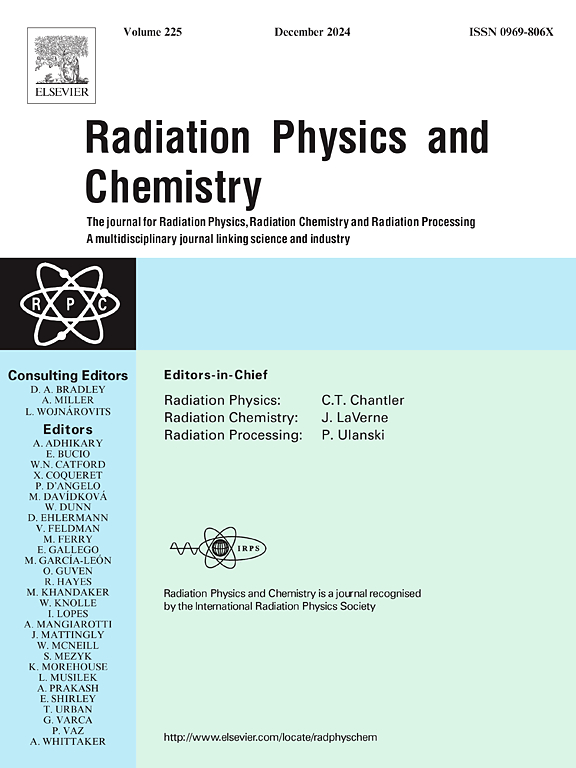Non-invasive estimation of absorbed ionizing radiation dose in mice using near-infrared spectroscopy (NIRS) and aquaphotomics
IF 2.8
3区 物理与天体物理
Q3 CHEMISTRY, PHYSICAL
引用次数: 0
Abstract
Accurate measurement of ionizing radiation exposure, whether therapeutic or accidental, is of utmost importance in various scenarios. This paper presents a study that addresses this critical need by utilizing near-infrared (NIR) spectroscopy and aquaphotomics to estimate radiation dose exposure in mouse models subjected to X-ray irradiation. The analysis of NIR spectra acquired from the mouse abdomen enabled non-invasive estimation of radiation doses ranging from 0.5 to 6.5 Gy, immediately following the irradiation exposure. The findings were consistent with the impact of total body irradiation in mice, as evidenced by measures such as animal survival rate, alterations in body weight observed over a 30-day post-exposure period, and changes in hematocrit levels. The spectroscopic measurements were based on detecting changes in the molecular structure of body water after radiation exposure, utilizing the water spectral pattern as a multidimensional biomarker. While further validation in nonhuman primates is necessary, the findings demonstrate a simple, non-destructive, and rapid method that holds promise for the estimation of radiation exposure across a range of doses, applicable to both clinical applications and catastrophic radiation events. These advancements in radiation dose quantification have significant implications for the timely and precise assessment of radiation exposure in humans.求助全文
约1分钟内获得全文
求助全文
来源期刊

Radiation Physics and Chemistry
化学-核科学技术
CiteScore
5.60
自引率
17.20%
发文量
574
审稿时长
12 weeks
期刊介绍:
Radiation Physics and Chemistry is a multidisciplinary journal that provides a medium for publication of substantial and original papers, reviews, and short communications which focus on research and developments involving ionizing radiation in radiation physics, radiation chemistry and radiation processing.
The journal aims to publish papers with significance to an international audience, containing substantial novelty and scientific impact. The Editors reserve the rights to reject, with or without external review, papers that do not meet these criteria. This could include papers that are very similar to previous publications, only with changed target substrates, employed materials, analyzed sites and experimental methods, report results without presenting new insights and/or hypothesis testing, or do not focus on the radiation effects.
 求助内容:
求助内容: 应助结果提醒方式:
应助结果提醒方式:


